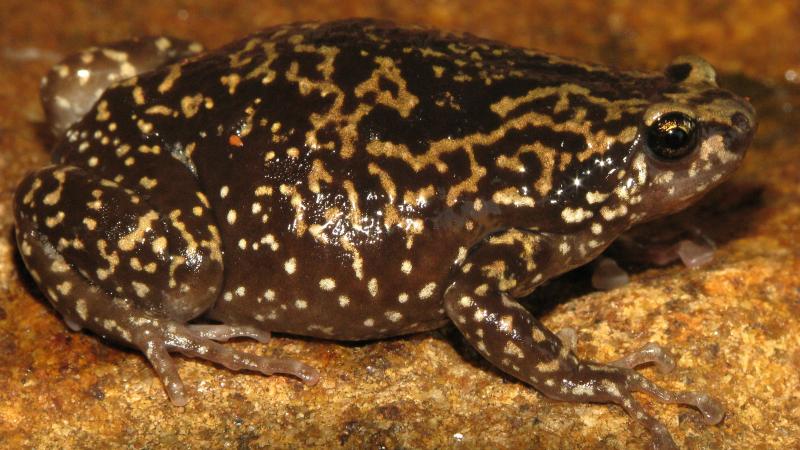
The Western Ghats in India and Sri Lanka are well known biodiversity hotspots, with a rich diversity of amphibian species. Both these regions have high density of amphibian endemism, which means that many of the species of amphibians found here are found nowhere else on Earth. Over 85% of amphibian species found in Sri Lanka are endemic, making this island nation have the highest amphibian endemism in Asia.
A collaborative effort by researchers from the University of Delhi, India, University of Peradeniya, Sri Lanka, University of Sri Jayewardenepura, Sri Lanka, Savitribai Phule Pune University, India, Zoological Survey of India, India, University of Kelaniya, Sri Lanka and Guangxi University, China has led to a new species of frog-- Uperodon rohani or Rohan’s globular frog being described from Sri Lanka. The new species was revealed during the revision of the South Asian species of frogs in the Uperodon genus using an integrative taxonomic approach, which uses a combination of morphological studies and DNA bar-coding. The study was published in the prestigious Zootaxa journal.
Currently, there are 12 known species in the South Asian genus of globular frogs, most of which are largely found in India and Sri Lanka. In this study, the researchers reviewed the taxonomy of all the species in this genus and studied their distribution, calling pattern, breeding behaviour, and physical characteristics of adults and tadpoles. Data for the research was collected from the Western Ghats - Sri Lanka biodiversity hotspot, between 2002 and 2015.
Speaking about the new discovery, the researchers say that this species was widely mistaken to be the Indian species Uperodon variegatus. DNA analysis and morphological comparisons showed that the species in Sri Lanka is indeed a distinct species, and was named U. rohani. It was named after taxonomist Rohan Pethiyagoda, for his extensive contribution to biodiversity research on amphibians and fish in Sri Lanka.
U. rohani is endemic to Sri Lanka and is distributed across the country. According to the researchers, it is very closely related to U. variegatus with similar physical and genetic characteristics. However, they can be differentiated by certain physical characteristics such as: the snout length of U. rohani is almost the same as the diameter of its eye whereas the snout length of U. variegatus is relatively longer than its eye; and U. rohani’s head is relatively narrower as compared to the relatively wider head of U. variegatus.
In the last decade alone, over 160 species of frogs have been discovered from the Western Ghats - Sri Lanka biodiversity hotspot. With increase in amphibian research in this region and the advancement of taxonomic techniques and tools, our understanding of amphibian classification and nomenclature is fast improving.





